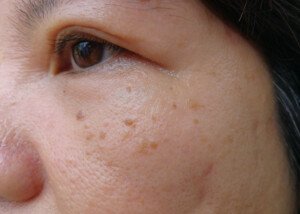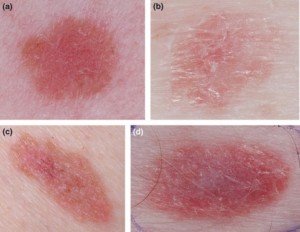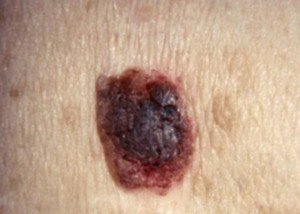
Are you noticing a new mole here and there even though you’re now in your 40s?
This can be alarming to anyone who’s read that new moles after age 40 are cause for concern.
If this describes you, perhaps you’re contemplating just having all the new moles removed to play it safe – with the idea that getting rid of them will prevent melanoma.
But should you have these new moles removed simply because they’re new and you’re in your 40s?
“No, not necessarily — removing all moles in middle aged people would cause undue anxiety and potential scarring,” says Sharyn Laughlin, MD, dermatologist and developer of the DermaEnvy Skincare ™ line of sun protection products and medical director of Laserderm, a pioneering laser skin surgery clinic in Ottawa, Ontario, Canada.
“It could also overwhelm the clinical and laboratory resources even in the best health care systems,” continues Dr. Laughlin.
So what should you do?
“Any new mole within a middle aged person should be checked, especially if they have any personal or family history [of melanoma] that elevates their risk,” says Dr. Laughlin.
“Middle aged people can develop seborrheic keratoses, or age spots, which can look surprisingly suspicious or persistent.”
In other words, what you think are new moles may actually be these benign skin barnacles.
One dermatologist actually told me that a seborrheic keratosis is a hallmark of being over 40.
Sometimes a seborrheic keratosis really CAN easily pass for a new mole, especially if it’s located in a spot where you can’t get an up close inspection of it—such as your back.

Seborrheic keratosis spots. Shutterstock/ Dhujmontra
Dr. Laughlin explains, “It is usually easy under a dermatoscope to identify seborrheic keratoses versus a mole, but it’s not a completely foolproof method for diagnosis.
“If the lesion looks suspicious at all, then a biopsy and pathological diagnosis will confirm whether it is benign or malignant, in which case everyone can sleep well at night.”
If you’re in your 40s or older and notice what appears to be a very rapidly changing mole that’s always been there, or a brand new mole with changes that are visible over just days … chances are exceedingly high that the spot is a seborrheic keratosis.
These harmless spots can suddenly change in appearance – a benign occurrence and nothing to worry about. Just remember that these spots usually start popping up once a person is in their 40s.
“Pink nodules or papules are perhaps the most worrisome, especially if they are changing for a period longer than three months,” says Dr. Laughlin.
These can signal a basal cell carcinoma or squamous cell carcinoma – two skin cancers that are more common than melanoma.
In fact, BCC is the most common cancer in the world. It almost always spreads only locally if not treated.
A pink nodule or papule can also be an amelanotic melanoma (below).

“A biopsy to rule out an amelanotic melanoma is wise,” says Dr. Laughlin. “Amelanotic means it has no color and looks pink. These melanomas are difficult to diagnose and are usually diagnosed late if the biopsy is delayed.”
Final Thoughts
If you’re in your 40s, new moles don’t necessarily mean melanoma or even a reason to have them automatically removed.
However, keep an eye on them as you would any other mole:
Conduct monthly skin self-exams and get acquainted with what your various spots look like.
Another kind of spot in people over 40, called a lentigo, can also strongly resemble a mole.
 In practice for 30+ years, Dr. Laughlin has been lead or co-investigator in many research trials and an innovator in developing new laser technology. dermaenvy.com.
In practice for 30+ years, Dr. Laughlin has been lead or co-investigator in many research trials and an innovator in developing new laser technology. dermaenvy.com.
 Lorra Garrick has been covering medical, fitness and cybersecurity topics for many years, having written thousands of articles for print magazines and websites, including as a ghostwriter. She’s also a former ACE-certified personal trainer.
Lorra Garrick has been covering medical, fitness and cybersecurity topics for many years, having written thousands of articles for print magazines and websites, including as a ghostwriter. She’s also a former ACE-certified personal trainer.
.









































